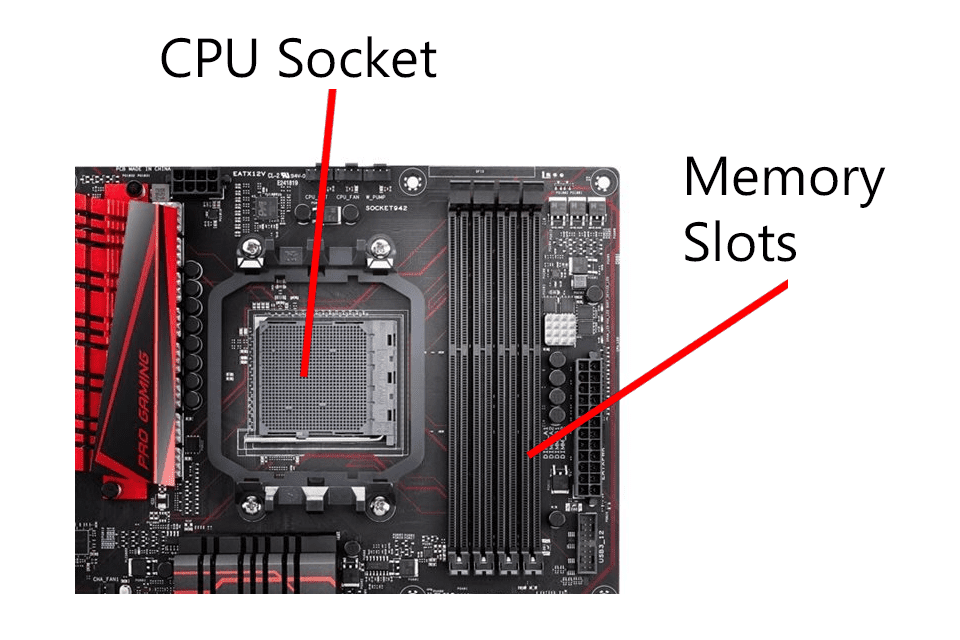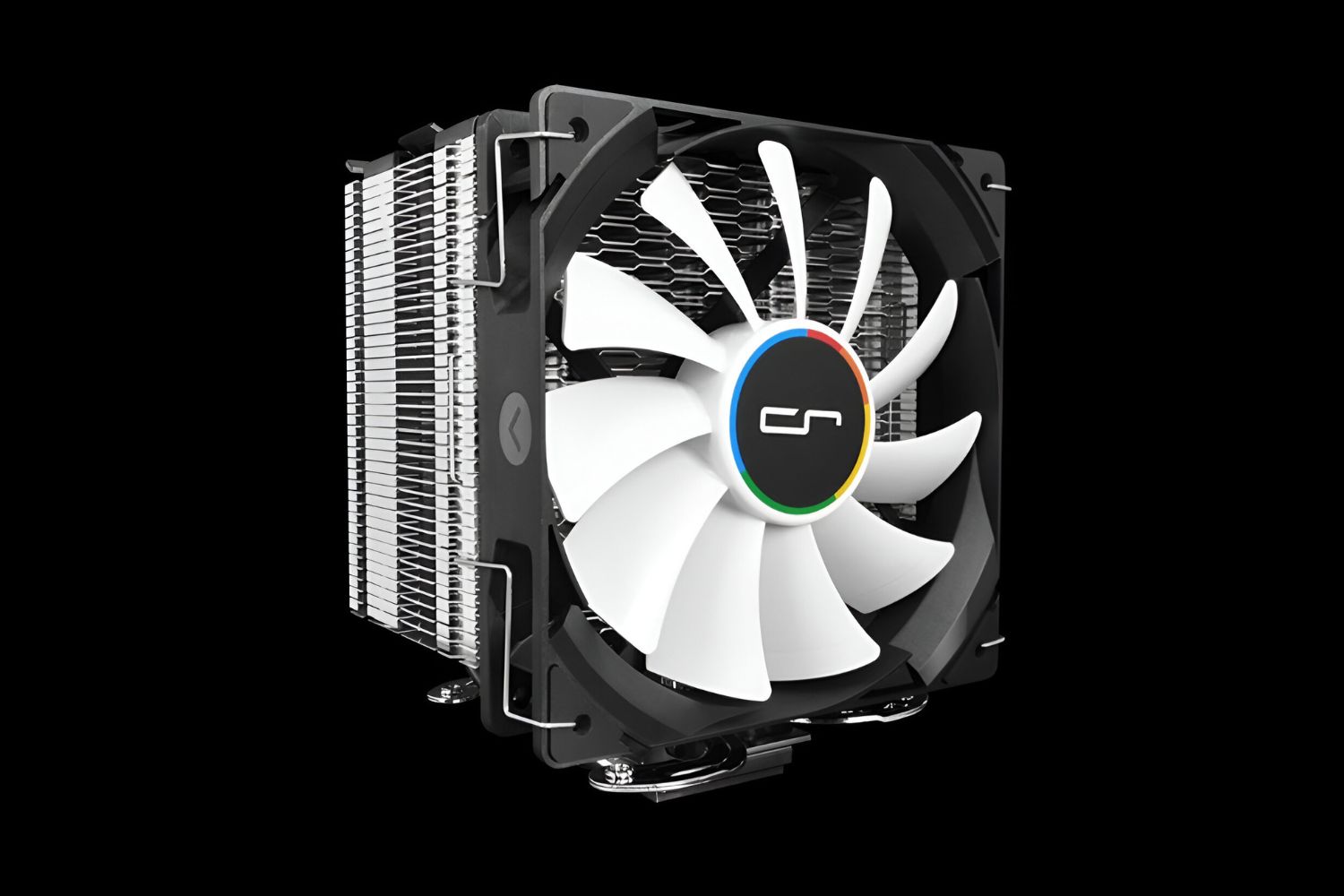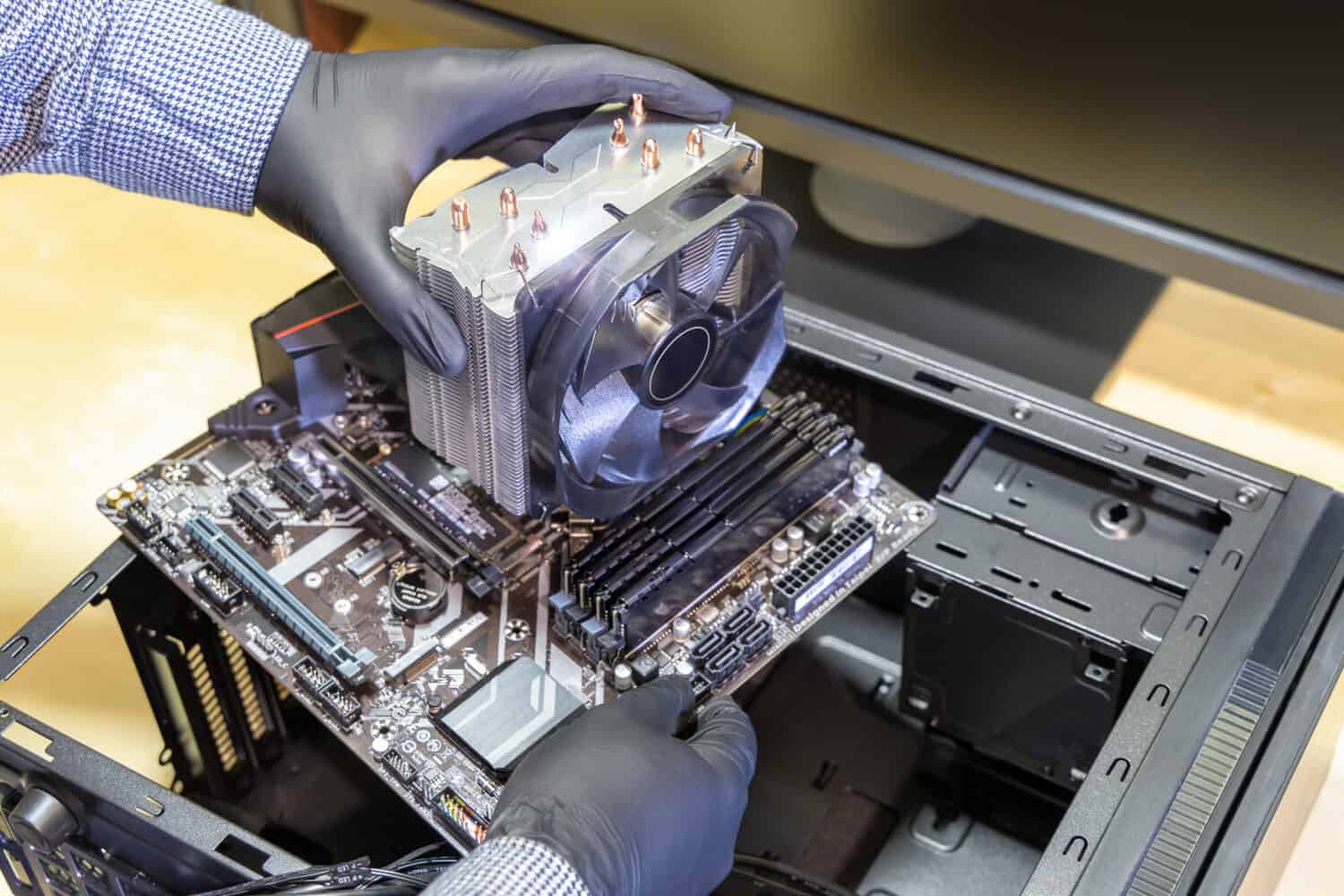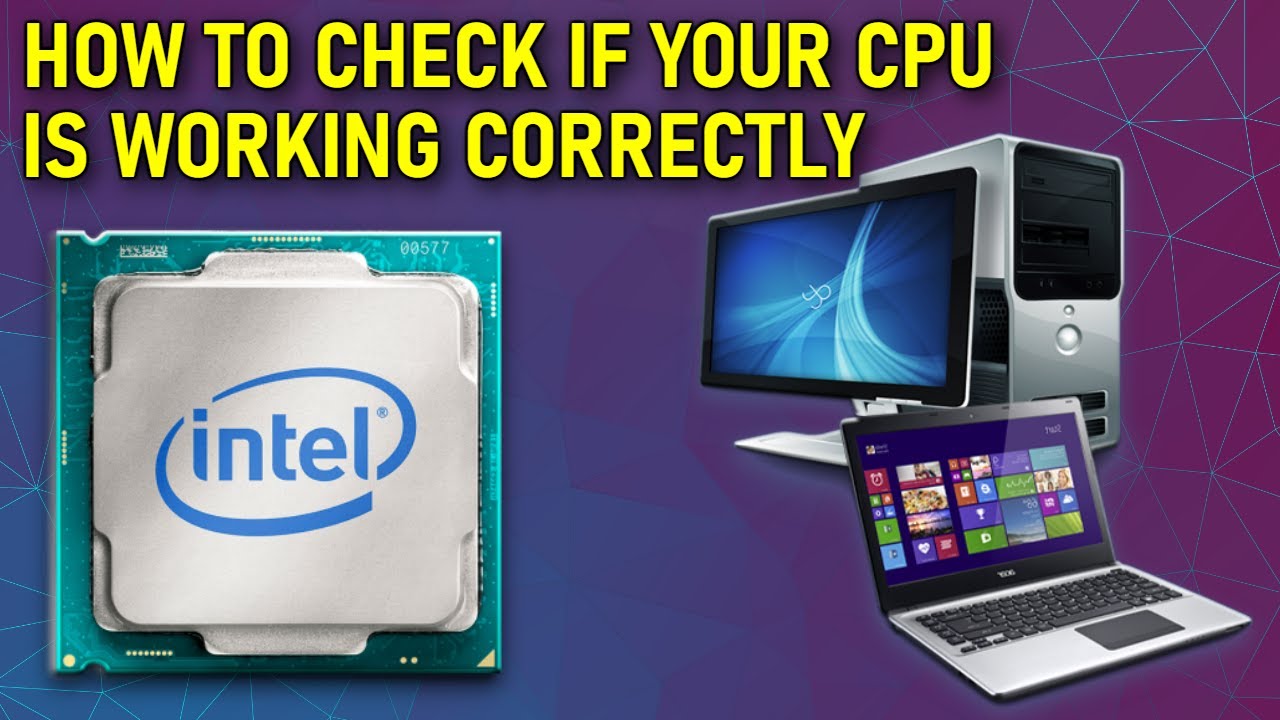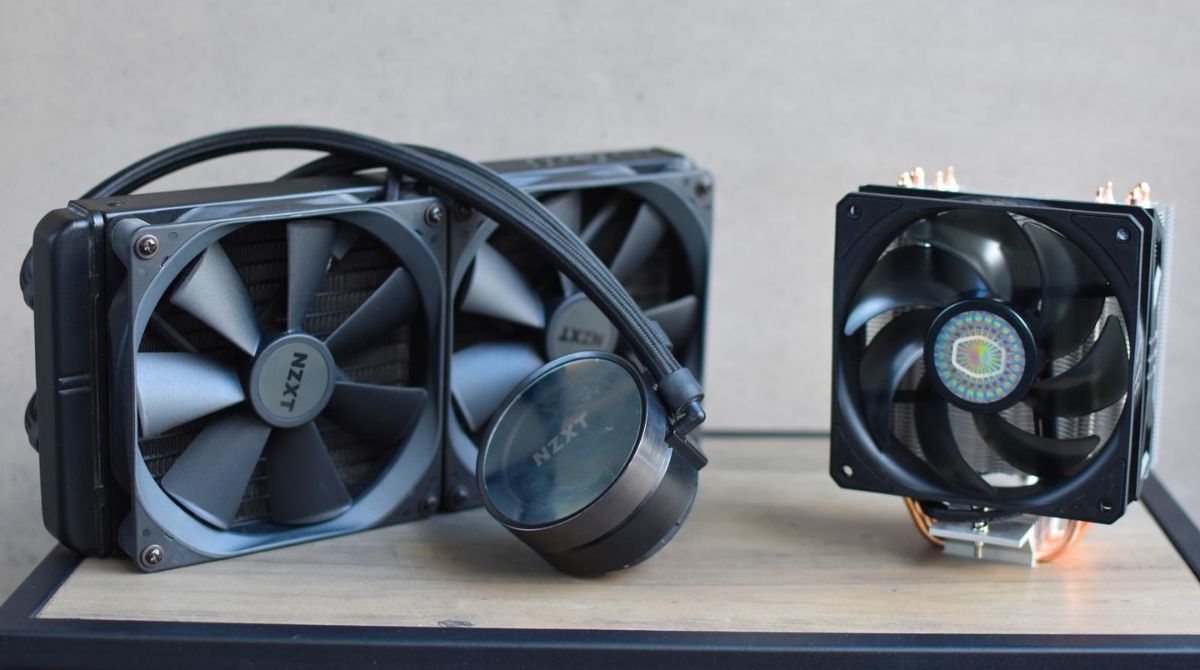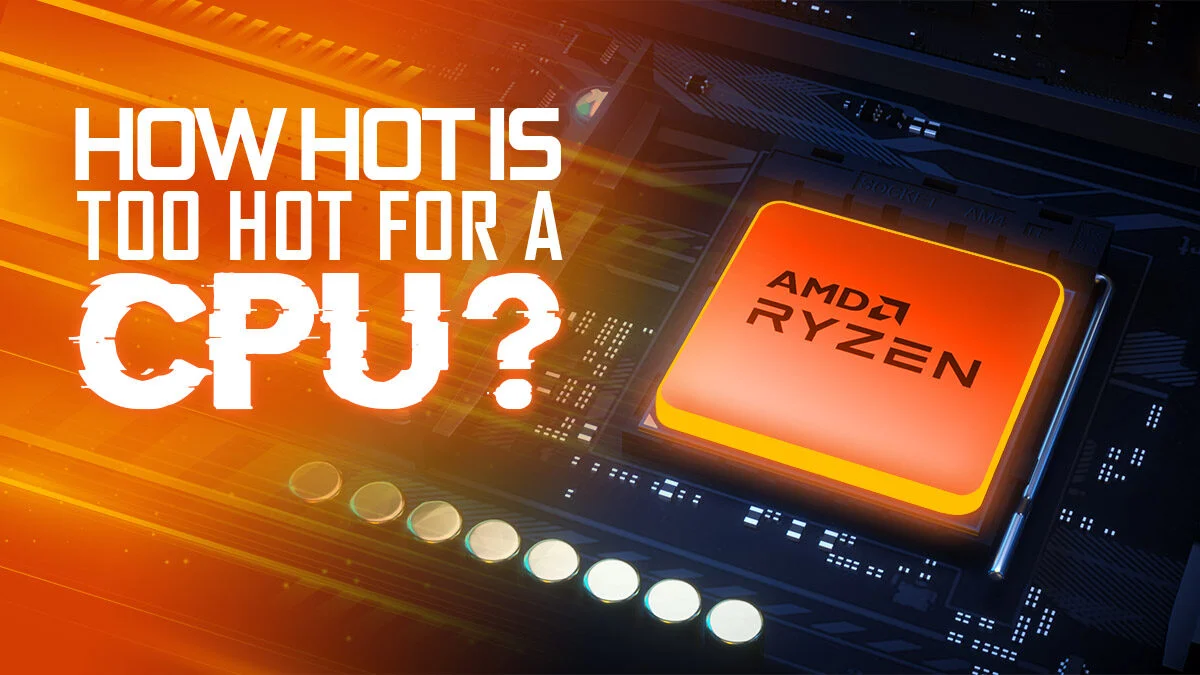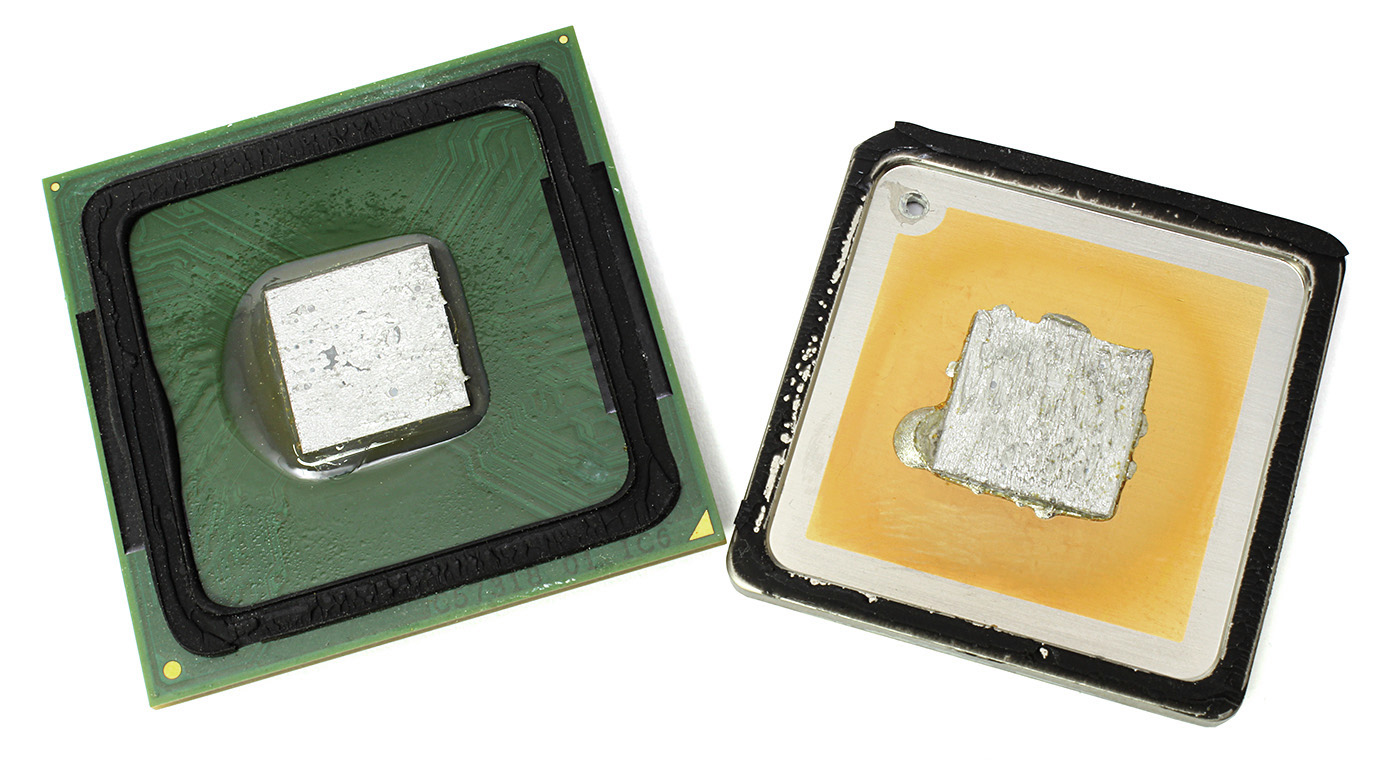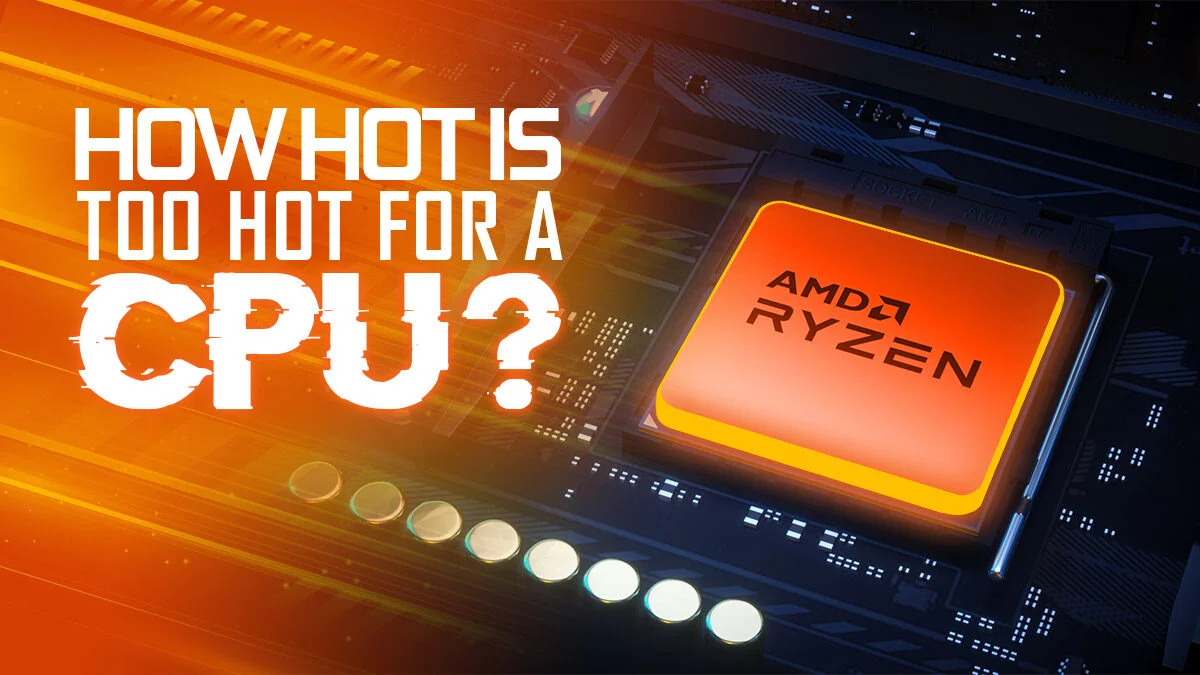Introduction
Welcome to the world of computer hardware! If you’ve ever used a computer, you’ve probably come across the term “CPU.” But have you ever wondered what exactly CPU is and where it is located within your computer? In this article, we will delve into the fascinating world of CPUs, their components, and their placement within both desktop and laptop computers.
The Central Processing Unit (CPU) is often referred to as the brain of the computer. It is responsible for executing instructions and performing calculations that are essential for the functioning of any computer system. Without a CPU, a computer would be nothing more than an inert machine.
Every CPU is composed of several intricate components that work together seamlessly to carry out the processing tasks. These components include the Arithmetic Logic Unit (ALU), Control Unit (CU), Memory Unit, and input/output (I/O) devices. Each of these components plays a unique role in ensuring smooth and efficient operation of the CPU.
Understanding how a CPU works can be a bit complex, but in simple terms, the CPU fetches instructions from the computer’s memory, decodes them, and then executes them. It carries out millions, if not billions, of these instructions per second, making it a highly powerful and efficient component of a computer system.
There are different types of CPUs available in the market, each designed for specific purposes. These include the Intel Core series, AMD Ryzen series, and the Apple M1 chip, to name a few. Each CPU has its own unique features and performance capabilities, catering to the diverse needs of computer users.
Now that we have a basic understanding of what a CPU is and how it functions, let’s move on to the main focus of this article – the placement of the CPU within a computer. Whether you are using a desktop or a laptop computer, the location of the CPU can vary, and we will explore these differences in the upcoming sections.
What is CPU?
The CPU, or Central Processing Unit, is the primary component of a computer that handles all the processing tasks. It is often referred to as the “brain” of the computer since it is responsible for executing instructions and performing calculations that allow the computer to function.
The CPU is composed of various components that work together to carry out its tasks. The key components of a CPU include the Arithmetic Logic Unit (ALU), the Control Unit, and the memory unit. The ALU performs mathematical operations and logical comparisons, while the Control Unit coordinates and manages the execution of instructions. The memory unit stores data and instructions that the CPU needs to access during processing.
The CPU works in conjunction with other hardware components, such as RAM (Random Access Memory) and storage devices, to perform tasks. When you run a program or use an application, the CPU retrieves instructions from the computer’s memory, decodes them, and executes them accordingly. It performs tasks at an incredibly fast pace, carrying out millions or even billions of instructions per second.
The performance of a CPU is measured by various factors, including clock speed, the number of cores, and cache size. Clock speed refers to the number of instructions a CPU can execute per second, represented in gigahertz (GHz). The higher the clock speed, the faster the CPU can perform tasks. Cores are essentially individual processing units within a CPU, allowing for simultaneous execution of multiple instructions. A higher number of cores generally results in increased multitasking capability. Cache refers to the small high-speed memory located within the CPU, which stores frequently accessed data for quick retrieval.
CPUs come in different types and models, each designed for specific purposes. Intel and AMD are two popular manufacturers of CPUs for personal computers, offering a range of processors tailored to different needs, from basic home use to high-performance gaming and professional applications.
In recent years, there has been a rise in specialized CPUs, such as graphics processing units (GPUs) and artificial intelligence (AI) processors, which are optimized for specific tasks like rendering graphics or machine learning algorithms. These specialized CPUs help offload specific tasks from the main CPU, enhancing overall performance in their respective domains.
Overall, the CPU is a vital component that powers the computer and enables it to perform a wide range of tasks. It represents the heart of the system, responsible for executing instructions and delivering the performance that users rely on in their daily computing activities.
The Components of a CPU
A CPU, or Central Processing Unit, is a complex piece of technology made up of several interconnected components. Each component plays a crucial role in the overall functioning of the CPU. Let’s take a closer look at the key components:
Arithmetic Logic Unit (ALU): The ALU is responsible for performing mathematical operations and logical comparisons. It can add, subtract, multiply, and divide numbers, as well as perform logical operations such as AND, OR, and NOT. The ALU operates on binary data, which consists of 0s and 1s, and can handle data of various sizes.
Control Unit (CU): The Control Unit acts as the “traffic conductor” of the CPU. It fetches instructions from the computer’s memory and decodes them, determining which operations need to be performed. It also coordinates the flow of data between different components of the CPU and ensures that instructions are executed in the correct order.
Registers: Registers are high-speed storage locations within the CPU. They hold small amounts of data that the CPU needs to access quickly during processing. There are various types of registers, including the instruction register, memory address register, and data registers. These registers help improve the efficiency of data access and reduce the need to access slower external memory.
Memory Unit: The memory unit of a CPU consists of cache memory and RAM (Random Access Memory). Cache memory is a small, ultra-fast memory located within the CPU. It stores frequently accessed instructions and data, allowing for quicker retrieval compared to RAM. RAM, on the other hand, is larger in capacity but slower to access than cache memory. It stores instructions and data that the CPU needs during processing.
Bus System: The bus system acts as a communication pathway within the CPU and between the CPU and other components of the computer system. It consists of data buses that carry instructions and data between different parts of the CPU, as well as address buses that identify the location of instructions and data in memory.
Input/Output (I/O) Interface: The I/O interface facilitates communication between the CPU and peripheral devices, such as keyboards, mice, and printers. It allows data to be exchanged between the CPU and these devices, enabling input and output operations.
These components work together in a highly coordinated manner to carry out the processing tasks of the CPU. The ALU performs calculations and logical operations, guided by instructions fetched and decoded by the Control Unit. Data is stored and retrieved from the memory unit, and the bus system ensures smooth communication between different components. The I/O interface enables interaction with external devices.
Understanding the components of a CPU provides insight into its intricate workings. Each component has a specific role and contributes to the overall efficiency and performance of the CPU. The advancements in CPU design and technology have led to faster and more powerful processors, enabling computers to handle increasingly complex tasks with ease.
How Does a CPU Work?
At the heart of every computer system, the Central Processing Unit (CPU) functions as the brain, executing instructions and performing calculations that drive the entire system. But how exactly does a CPU work? Let’s uncover the inner workings of this remarkable piece of technology.
The CPU operates based on a cycle called the “fetch-decode-execute” cycle. It starts by fetching instructions from the computer’s memory. These instructions, in the form of binary code, are then decoded by the Control Unit (CU) to determine the specific operations the CPU needs to perform. The decoded instructions are then executed by the CPU’s components.
The CPU consists of an Arithmetic Logic Unit (ALU), which performs mathematical calculations and logical operations, and a Control Unit that directs the flow of data and instructions within the CPU. The ALU carries out the necessary calculations, such as addition, subtraction, multiplication, and division, as well as logical operations like comparisons and conditional statements.
During execution, the ALU accesses data and instructions from the memory unit. The memory unit consists of a cache memory and RAM (Random Access Memory). The cache memory is a small, high-speed memory that stores frequently accessed instructions and data, allowing for quick retrieval. RAM, on the other hand, stores larger amounts of data and instructions. The CPU retrieves the required data from the memory unit, performs the calculations or operations, and stores the results back in the memory.
The CPU communicates with other components of the computer system through a bus system. The bus system consists of data buses that carry instructions and data between different components and address buses that identify the locations of instructions and data in memory. This communication allows for the exchange of information between the CPU, memory, and peripheral devices.
A key factor that influences CPU performance is the clock speed. The clock speed represents the number of instructions the CPU can execute per second, measured in gigahertz (GHz). Higher clock speeds result in faster processing, as more instructions are executed in a given time. However, clock speed alone does not determine overall performance, as factors such as architecture, cache size, and the number of cores also impact CPU efficiency.
Modern CPUs often feature multiple cores, allowing for simultaneous execution of multiple instructions. These cores act as individual processing units and can independently perform tasks assigned to them, reducing processing time and improving multitasking capabilities. Software optimized for multi-core CPUs can make the most out of this parallel processing power.
In summary, a CPU works by executing a cycle of fetching, decoding, and executing instructions. The ALU performs the necessary calculations and logical operations using data retrieved from the memory unit. The control unit directs the flow of data and instructions, while the bus system provides communication between components. Clock speed, cores, cache, and architecture all play a role in determining the performance and capabilities of a CPU.
Different Types of CPUs
Central Processing Units (CPUs) come in various types and models, each designed to cater to specific needs and applications. Let’s explore some of the different types of CPUs available in the market today:
Intel Core Series: Intel is one of the leading manufacturers of CPUs for personal computers. The Intel Core series is known for its powerful performance and versatility. It offers a range of processors suitable for different applications, from basic home use to high-end gaming and professional tasks. The Core i3, i5, i7, and i9 processors are popular choices for desktop computers, each offering varying levels of performance and features.
AMD Ryzen Series: AMD has emerged as a strong competitor to Intel in the CPU market, particularly with its Ryzen series. AMD Ryzen processors are known for their value for money and competitive performance. The Ryzen series offers a wide range of processors targeted at different price points and usage scenarios, including gaming, content creation, and productivity tasks. Ryzen processors often provide excellent multi-core performance, making them suitable for multitasking and demanding applications.
Apple Silicon (M1 Chip): Apple has recently transitioned from Intel processors to its own custom-designed CPUs based on ARM architecture. The Apple Silicon, specifically the M1 chip, is designed for use in Apple’s own line of Mac computers. These processors offer significant improvements in performance, power efficiency, and integration with Apple’s macOS. The M1 chip showcases Apple’s focus on optimizing performance for their specific hardware and software ecosystem.
Server CPUs: Server CPUs are designed for handling heavy workloads in data centers and server environments. These CPUs emphasize high performance, reliability, and scalability. Intel Xeon and AMD EPYC are popular choices for server CPUs, offering features such as higher core counts to handle multiple parallel tasks and support for server-specific technologies like ECC (Error-Correcting Code) memory.
Specialized CPUs: In addition to general-purpose CPUs, there are specialized CPUs tailored for specific tasks. Graphics Processing Units (GPUs) are widely used for rendering graphics and accelerating tasks such as 3D modeling, video editing, and gaming. GPUs, from manufacturers like NVIDIA and AMD, are known for their parallel processing power and immense computational capabilities. AI-focused CPUs, such as those developed by NVIDIA for deep learning and artificial intelligence applications, are specifically designed to accelerate machine learning tasks.
The choice of CPU depends on various factors, including budget, usage requirements, and compatibility with other system components. Factors like clock speed, number of cores, cache size, and architecture should also be considered when selecting a CPU to ensure it meets your specific needs.
Regardless of the CPU you choose, it’s important to ensure compatibility with the motherboard and other components of your system. Consulting with hardware experts or referring to system specifications can help you make an informed decision when selecting a CPU for your computer.
Where is CPU Located in a Computer?
The Central Processing Unit (CPU) is a vital component of a computer system, but where exactly is it located? The placement of the CPU can vary depending on whether you have a desktop or a laptop computer.
CPU Placement in Desktop Computers: In desktop computers, the CPU is typically located inside the computer case on the motherboard. The motherboard is the main circuit board that connects all the components of the computer system. The CPU is installed in a special socket on the motherboard, allowing for easy removal and replacement if necessary. To access the CPU, you would typically need to remove the computer case and any heat sink or cooling fan that may be covering the CPU. This allows for proper cooling and heat dissipation, as the CPU can generate significant heat during operation.
CPU Placement in Laptop Computers: In contrast to desktop computers, the placement of the CPU in laptops is different due to the compact design. Most laptops have the CPU integrated directly into the motherboard. This integration helps save space and allows for a more streamlined design. The CPU is usually located underneath a heat sink or a cooling fan, which helps dissipate heat generated during operation. Accessing the CPU in a laptop is generally more complex than in a desktop, as it requires dismantling the laptop’s casing and carefully removing any thermal components to reach the CPU.
It’s worth noting that some high-performance laptops, particularly those designed for gaming or professional use, may feature a modular CPU design. This allows for the CPU to be upgradeable or replaceable, providing some flexibility for users who want to customize or improve their laptop’s performance.
Overall, whether in a desktop or a laptop computer, the CPU is a crucial component that powers the computer’s processing capabilities. Its placement is carefully considered to ensure efficient cooling and integration with other components. Understanding the location of the CPU can be helpful when it comes to maintenance, upgrades, or troubleshooting processes related to the CPU in your computer system.
CPU Placement in Desktop Computers
In desktop computers, the Central Processing Unit (CPU) is typically located inside the computer case on the motherboard. The motherboard serves as the main circuit board that connects all the components of the computer system, including the CPU.
The CPU is installed in a specific socket on the motherboard, designed to accommodate the specific type and model of the CPU. The socket provides a secure and stable connection between the CPU and the motherboard. This arrangement allows for easy installation and removal of the CPU when needed, enabling upgrades or replacements as technology advances.
To access the CPU in a desktop computer, you usually need to remove the computer case. This is typically done by unscrewing or unlatching the case, which allows you to expose the internal components. Once the case is open, you may need to remove any heat sink or cooling fan that covers the CPU. Heat sinks and cooling fans help dissipate the heat generated by the CPU during operation, preventing overheating and ensuring optimal performance.
It is important to ensure proper cooling of the CPU as excess heat can lead to thermal throttling, reduced performance, and even hardware damage. The cooling mechanism in desktop computers often entails removing the heat generated by the CPU and directing it to the outside of the case through fans or liquid cooling systems. Heat sinks, made of metal such as copper or aluminum, are placed on top of the CPU to absorb heat, while the cooling fan or liquid coolant carries the heat away from the CPU.
Once the cooling system is removed or retracted, the CPU is readily visible. Gently lifting the securing lever or latch and carefully removing the CPU from its socket allows for inspection, cleaning, replacement, or upgrade purposes. When reinstalling the CPU, it is crucial to align the pins and notch on the CPU with the corresponding markers on the socket to ensure proper orientation.
Overall, the placement of the CPU in desktop computers takes into account functionality, accessibility, and thermal management. The motherboard serves as the platform that connects the CPU to other components, while the cooling system helps maintain optimal temperature levels. Understanding the placement of the CPU in desktop computers can be helpful when performing maintenance or upgrading tasks related to the CPU.
CPU Placement in Laptop Computers
In the case of laptop computers, the placement of the Central Processing Unit (CPU) differs from that of desktop computers due to the compact design and portability of laptops. The CPU is typically integrated directly into the motherboard of the laptop, creating a more streamlined and space-efficient design.
In most laptops, the CPU is located underneath a heat sink or a cooling fan. The heat sink helps absorb and distribute the heat generated by the CPU during operation, while the cooling fan facilitates the dissipation of heat to prevent overheating. These thermal management components are usually positioned strategically to ensure proper cooling and prevent damage to the CPU.
Accessing the CPU in a laptop can be more complex compared to desktop computers due to the compact and tightly packed nature of laptop designs. It typically involves disassembling parts of the laptop’s casing and removing any thermal components that cover the CPU. This process can vary depending on the specific laptop model, and it is recommended to refer to the laptop’s user manual or seek professional assistance for proper disassembly procedures.
Once the CPU is exposed, it can be inspected, cleaned, or replaced if necessary. However, it is essential to exercise caution when working with the CPU in a laptop to avoid causing any damage to the delicate components surrounding it. The CPU in laptops is integrated as a fixed part of the motherboard, meaning that it cannot be easily removed or upgraded independently like in desktop computers.
It is worth noting that some high-performance laptops, particularly those designed for gaming or professional use, may feature a modular CPU design. This allows for the CPU to be upgradeable or replaceable, providing some flexibility for users who want to customize or improve their laptop’s performance. In these cases, the process of accessing and swapping the CPU may be slightly different compared to non-modular laptop models.
CPU placement in laptop computers prioritizes space efficiency, thermal management, and integration with other components. The compact design of laptops requires careful consideration of cooling mechanisms and overall heat dissipation to ensure efficient and reliable performance. As laptops continue to evolve, advancements in thermal management technologies and CPU integration are being made to improve overall performance while maintaining a sleek and portable design.
Conclusion
The Central Processing Unit (CPU) is the powerhouse of a computer system, responsible for executing instructions and performing calculations that drive the entire system. Through its intricate components and intelligent architecture, the CPU enables computers to process data, run applications, and perform a wide range of tasks.
We have explored the components of a CPU, including the Arithmetic Logic Unit (ALU), Control Unit (CU), memory unit, and bus system. The ALU carries out mathematical and logical operations, while the Control Unit manages the flow of data and instructions. The memory unit stores instructions and data, allowing for quick retrieval, and the bus system facilitates communication between components.
Understanding how a CPU works provides insight into its remarkable capabilities. The CPU fetches, decodes, and executes instructions in a continuous cycle, delivering lightning-fast processing speeds and enabling smooth multitasking. Factors such as clock speed, number of cores, and cache size impact CPU performance.
We have also explored different types of CPUs, such as the Intel Core series and AMD Ryzen series, which offer a range of processors suitable for various applications. Specialized CPUs, like graphics processing units (GPUs) and AI processors, cater to specific tasks and provide enhanced performance in their respective domains.
When it comes to the placement of the CPU, desktop and laptop computers differ. In desktop computers, the CPU is located on the motherboard inside the computer case. Accessing the CPU involves removing the case and any cooling mechanisms. For laptops, the CPU is integrated into the motherboard, typically positioned beneath a heat sink and cooling fan. Accessing the CPU in a laptop requires careful disassembly and removal of these thermal components.
Ultimately, the CPU is a fundamental component of a computer system, playing a vital role in its operation and performance. From its intricate components to its placement within different computer types, the CPU showcases the incredible technological advancements that have revolutionized the way we compute and interact with technology.







